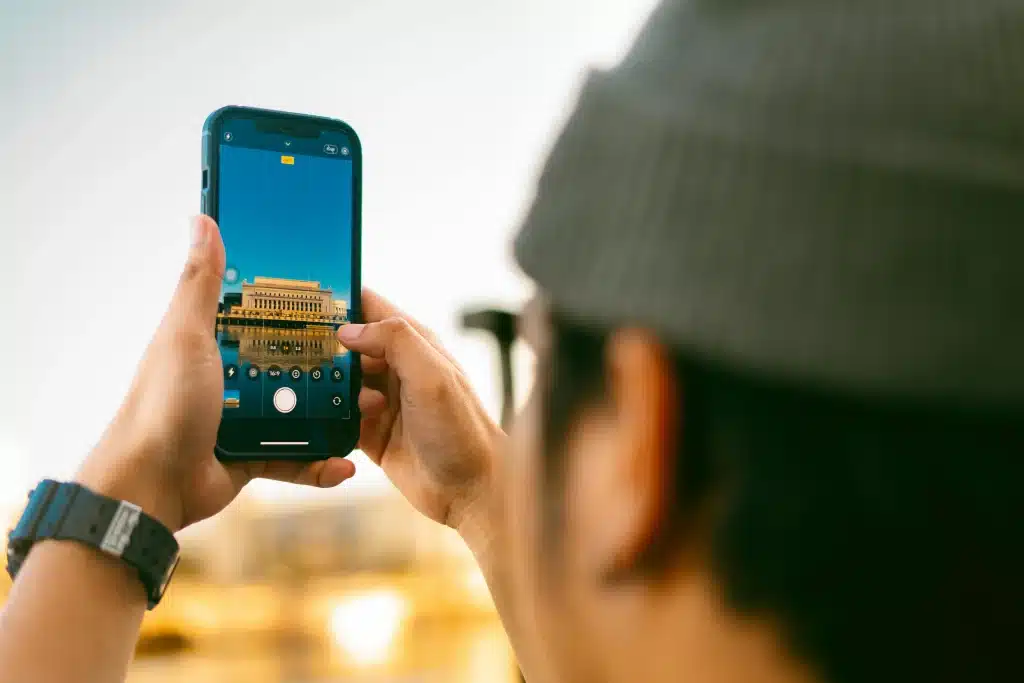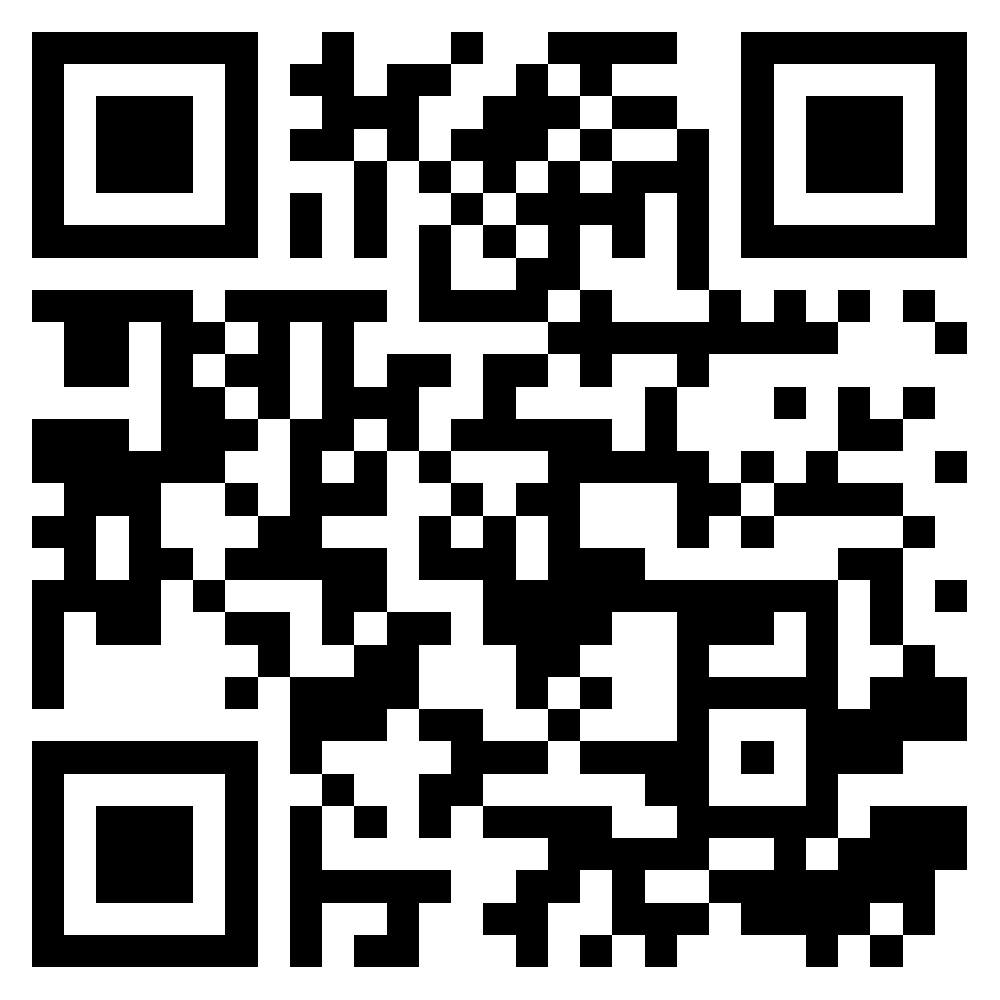
Traveling to the Philippines in 2025? Philippines eSIM options are more accessible and reliable than ever. Whether you’re a digital nomad planning to work remotely from Cebu, a tourist hopping across Palawan, or an expat settling in Manila, staying connected has never been more essential. With the Philippines’ growing digital infrastructure and widespread mobile coverage, eSIMs have quickly become the go-to solution for convenient, fast, and affordable internet access while on the move.
In this comprehensive guide, we’ll walk you through everything you need to know about using eSIMs in the Philippines—from top provider recommendations to expert setup tips, detailed plan comparisons, and key considerations to help you choose the best solution for your connectivity needs. Take the time to read until the end and don’t forget to check our full eSIM activation guide for a smooth setup process.
What is an eSIM and why should you use one in the Philippines?
An eSIM (embedded SIM) is a digital version of a traditional SIM card that allows you to activate a cellular plan from your device without needing to insert a physical card. It’s convenient, eco-friendly, and perfect for travelers looking to avoid the hassle of buying and switching physical SIMs.
In the Philippines, eSIMs offer several key advantages:
- Instant activation: Set up before arrival or while in transit.
- No physical store visits: Skip long queues and airport kiosks.
- Better rates: eSIMs often provide more competitive prices than roaming or physical SIMs.
- Flexible plans: Choose prepaid or unlimited packages tailored to your travel duration.
As of 2025, the answer to “does the Philippines have eSIM?” is a resounding yes. Providers like Smart and Globe now support eSIM, alongside a growing number of international eSIM providers. Need a refresher on what an eSIM is? Check out our guide to understand how it works and which devices are compatible.
Thinking of combining a digital and a traditional SIM on your phone? Our complete guide — Can I use eSIM and physical SIM at the same time? — walks you through compatibility, setup, and the real benefits of dual SIM usage.
Why choose an eSIM for traveling in the Philippines?
International data roaming vs. eSIM
When traveling to the Philippines, staying connected is no longer a luxury—it’s a necessity. Whether you’re using Google Maps in Manila, booking your next island-hopping tour from Palawan, or sharing beach photos in real time, reliable mobile data is crucial.
This brings up an important choice for travelers: should you rely on international roaming from your home carrier, or switch to a local or global eSIM?
International roaming is often expensive, with rates that can skyrocket quickly—especially with apps like YouTube or Instagram. On top of that, many travelers face limited coverage, slow speeds, or even bill shocks once they return home.
In contrast, eSIMs offer a smarter, more affordable alternative. With an eSIM, you can activate a local data plan instantly, before you even land. There’s no need to queue at kiosks, swap physical SIM cards, or risk losing your home SIM.
eSIMs connect you to local networks like Globe, Smart, or DITO at native speeds and pricing.
Key benefits of choosing an eSIM over traditional roaming:
- Cost-effective: eSIM plans are typically much cheaper than roaming fees from international carriers.
- Instant activation: Get connected as soon as you arrive, or even beforehand.
- Better coverage & speed: Access the same 4G/5G networks that locals use.
- No physical SIM swapping: Keep your primary SIM for calls and texts if needed.
- Flexible options: Choose from multiple providers, data volumes, and durations.
Whether you’re staying for a few days or a few months, an eSIM lets you stay online, work remotely, or share your adventures stress-free.
👉 Compare providers now and find the best eSIM plan for your stay.
eSIM coverage in the Philippines: What to expect?

Urban centers (Manila, Cebu, Davao)
In Metro Manila and key cities like Cebu and Davao, coverage is extensive with both 4G and 5G widely available. eSIMs using local carriers (Smart or Globe) offer excellent speeds—ideal for streaming, video calls, and tethering.
Tourist hotspots (Palawan, Bohol, Siargao)
While these destinations are more remote, connectivity is surprisingly good. Providers like Ubigi and Nomad offer plans that tap into multiple networks, providing redundancy and stable connections even in less populated areas.
Rural areas and islands
Performance may drop in more rural provinces and remote islands. If you’re planning to explore off-the-beaten-path locations, opt for providers with multi-network access like Saily or Airalo, which automatically switch to the best available signal.
Our Top eSIM recommendations for the Philippines
1. Airalo eSIM for Philippines – 10 GB for $21 USD
Airalo offers a 10 GB data plan valid for 30 days at $21 USD, providing reliable coverage across the Philippines. This plan is ideal for travelers seeking a balance between data allowance and cost.
2. Nomad eSIM for Philippines – 10 GB for $13 USD
Nomad provides a 10 GB data plan valid for 30 days at $13 USD, offering a cost-effective solution for data-savvy travelers. Users have reported consistent performance and ease of use with Nomad’s services.
Best eSIMs for travelers in the Philippines – Detailed review
1. Saily – Best overall eSIM for the Philippines
Saily, developed by the creators of NordVPN, is praised for its convenient installation process and excellent speeds in over 200 countries. It offers a variety of data plans suitable for different travel durations, making it a flexible option for travelers.
2. Airalo – Reliable eSIM for travelers
Airalo is a market leader in eSIM technology, offering a range of data-only plans for the Philippines. Their eSIMs operate on the 4G/LTE network of Globe, ensuring widespread coverage. Plans range from 1 GB for 7 days at $4.50 USD to 20 GB for 30 days at $32 USD.
3. Nomad – Prepaid eSIM with SMS support
Nomad offers competitive eSIM plans for the Philippines, with options like 10 GB for 30 days at $13 USD. Their eSIMs operate on the Globe network and support 5G connectivity, providing fast and reliable internet access.
4. Jetpac – Flexible eSIM for various needs
Jetpac provides flexible eSIM plans, such as 10 GB for 30 days at $16 USD. Users have found Jetpac to be a solid choice for moderate data usage, offering good value and reliable service.
5. Ubigi – High-speed eSIM for business and tourists
Ubigi offers a variety of data packages with seamless data tethering capabilities, allowing you to share your connection with other devices. Their plans start at $3 for 500 MB for 1 day, catering to both short-term visitors and long-term travelers.
6. aloSIM – Budget-friendly eSIM with wide coverage
aloSIM provides affordable eSIM options with coverage in multiple countries, including the Philippines. Their plans are suitable for travelers seeking cost-effective solutions without compromising on connectivity.
7. Instabridge – Pay-As-You-Go eSIM option
Instabridge offers pay-as-you-go eSIM plans, allowing travelers to pay only for the data they use. This flexibility is ideal for those with unpredictable data needs.
8. Sim Local – Convenient eSIM with local plans
Sim Local provides eSIMs with local data plans, offering travelers the convenience of local rates without the need for a physical SIM card. Their plans are tailored to meet the needs of international travelers.
9. SimOptions – Wide selection of eSIM packages
SimOptions offers a variety of eSIM plans for the Philippines, with options ranging from 1 GB for 7 days at $4.50 USD to 50 GB for 60 days at $79.90 USD. Their eSIMs are data-only and do not support incoming/outgoing calls or SMS services.
10. Holafly – Unlimited data eSIM for heavy users
Holafly provides unlimited data eSIM plans for the Philippines, with options like unlimited data for 30 days at $74.90 USD. While pricier, these plans are ideal for heavy data users or remote workers who require constant connectivity.
11. Smart – Reliable local provider with strong coverage
Smart Communications offers local eSIM options with extensive coverage across the Philippines. Travelers have noted that Smart’s eSIMs are cost-effective and perform well in both urban and provincial areas
Regional Analysis: Which eSIM works best where?
Luzon (Manila, Baguio, Vigan)
- Top Choice: Airalo or Saily (uses Globe network)
- Experience: Seamless coverage and excellent signal indoors and outdoors
Visayas (Cebu, Bohol, Iloilo)
- Top Choice: Ubigi and Nomad
- Experience: High reliability in central hubs, with solid support for hotspot use
Mindanao (Davao, Cagayan de Oro, Siargao)
- Top Choice: Saily or Holafly for remote-friendly signal reach
- Experience: Varies between cities; Holafly’s unlimited plan ensures stable browsing despite signal drops
eSIM vs local SIM card: Which is better?
Choosing between an eSIM and a local SIM card depends on your travel preferences, technical comfort level, and the duration of your stay in the Philippines. Here’s a breakdown of the differences and which option might suit you best:
eSIM advantages:
- Convenience: eSIMs can be activated online before your trip, meaning you’ll be connected the moment you land—no need to search for local shops or kiosks.
- Instant setup: Activation is typically done via QR code or app in just a few taps. No need to handle or insert a physical SIM.
- Multiple plans: Many providers offer regional plans or allow for multi-country travel coverage, ideal for tourists visiting several destinations in Southeast Asia.
- No physical swapping: Your device can hold multiple eSIM profiles, making it easier to switch plans without removing a SIM card.
Local SIM card advantages:
- Voice/SMS support: Local SIMs often include a Philippine phone number, which can be useful for making calls or receiving local verification SMS.
- Lower long-term costs: For stays longer than 30 days or for expats, local SIMs can be more cost-effective over time, especially for regular calls and texts.
- Access to local promos: Some in-store SIM offers or bundles might include extra data or call minutes that aren’t available online.
Potential drawbacks:
- eSIM limitations: Some providers are data-only and don’t support traditional voice or SMS services. eSIMs also rely heavily on having a compatible and unlocked device.
- Local SIM hassles: Purchasing a physical SIM in the Philippines might require an ID, and setup often involves configuring APN settings or queuing at airport kiosks or malls.
Our Verdict:
- Best for short-term travelers: eSIM, due to its flexibility, ease of setup, and the ability to plan ahead before arrival.
- Best for long-term stays or expats: Local SIM, particularly if you need a Philippine number and want access to voice/SMS services at local rates.
The good news? Many modern smartphones now support dual SIM (eSIM + physical SIM), so you can use both options at once—perfect for maintaining your home number while enjoying affordable data locally.
Where to buy an eSIM for the Philippines
1. Online via providers
Most users prefer to buy eSIM online Philippines through platforms like esimseeker.com, Airalo, or SimOptions. You’ll receive a QR code or use the provider’s app for activation.
2. Upon arrival (Less recommended)
You can request a Globe eSIM swap or apply at Smart’s stores. This option is slower and often requires ID verification and wait times.
3. Through comparison platforms
Sites like esimseeker.com let you compare airalo vs saily vs ubigi, filter by data size, duration, and price to find the best fit.
How to activate an eSIM on iPhone or Android
For iPhone (XR and newer):
- Go to Settings > Cellular > Add eSIM
- Scan the QR code or download via app
- Enable eSIM and set as data line
For Android:
- Open Network & Internet > Mobile Network > Add Carrier
- Use QR or manual entry (activation code)
- Follow prompts to finish setup
Tips:
- Ensure your phone is unlocked
- Restart the device after setup
- Enable data roaming if required by the eSIM provider
Key considerations before buying
- Check compatibility: Your phone must support eSIM. Most flagship devices do.
- Do you need unlimited data?: Heavy users should go for Holafly or Nomad.
- Plan length: 7, 15, 30, 60-day options available
- Do you need tethering?: Choose Ubigi or Saily for mobile hotspot
- Price vs Data: Compare offers like Nomad (20 GB) vs Holafly (unlimited)
Recommended eSIM plans by travel type
Choosing the right eSIM plan depends largely on your travel profile, lifestyle, and how you use mobile data during your trip. Here’s a detailed breakdown by travel type:
The Solo backpacker
If you’re exploring the Philippines on a budget, hopping from one island to another with only a backpack and your phone, you’ll likely need an affordable plan just for essential connectivity—maps, messaging, and booking confirmations. In this case, aloSIM is a smart pick. Their low-cost plans, like 1 GB for 7 days, are ideal if you’re relying on hostel WiFi most of the time and just need a small data boost on the go.
The Business traveler
For those traveling to Metro Manila or Cebu for work, attending meetings, or hosting video calls, stability and reliability are key. Ubigi is an excellent option, offering plans with hotspot sharing and strong 4G coverage. Its compatibility with laptops and tablets also makes it perfect for those needing tethered internet access during a busy itinerary.
The content creator
If you’re a travel influencer, YouTuber, or digital storyteller sharing every moment of your journey, you’ll need generous or unlimited data with consistent speed. Holafly stands out here with its unlimited data plans, especially if you’re live-streaming, uploading video content, or constantly engaging on social media. It eliminates the stress of monitoring your usage every day.
The digital nomad
Long-term travelers working remotely from cafés in Siargao or coworking spaces in Makati need a dependable plan with ample data. Nomad offers 20 GB and higher plans, along with 30-day validity, which makes it one of the most flexible and work-friendly choices. With support for VoIP and occasional SMS, it can serve as your mobile office in your pocket.
The family traveler
If you’re traveling with family or in a group, managing multiple devices and people with varying internet needs becomes challenging. Providers like Saily offer family-friendly plans with sufficient data to share across multiple smartphones or tablets. Using one eSIM-enabled device as a hotspot for the rest of the group can be both efficient and cost-effective.
Each travel profile has distinct requirements. Whether you’re a light user or a digital heavy-hitter, there’s an eSIM plan perfectly suited for your style of travel. By understanding your connectivity habits and priorities, you can confidently pick the best eSIM and avoid overspending or running out of data mid-adventure.
Is there 5G eSIM in the Philippines?
Yes. 5G is now available in Metro Manila, Cebu City, and parts of Davao. Providers like Smart and Globe lead in deployment. Some eSIM providers like Saily and Nomad support 5G-ready profiles. However, the experience depends heavily on your device and exact location.
Top 10 FAQs about eSIMs in the Philippines

1. Can I use an eSIM and a physical SIM together?
Yes, you can. Most modern smartphones are equipped with dual SIM capabilities, which means you can use one physical SIM card alongside a digital eSIM. This is especially convenient for travelers who want to keep their home number active for calls and messages while using a local or international eSIM for affordable mobile data during their trip.
2. Is eSIM available in Cebu or Palawan?
Is eSIM available in Cebu or Palawan?Absolutely. Most international eSIM providers like Airalo, Saily, and Ubigi have partnerships with local carriers such as Globe and Smart, ensuring coverage not just in Metro Manila but also in major tourist destinations like Cebu, Bohol, Siargao, and Palawan. While some remote areas may experience spotty service, these providers generally offer reliable 4G/LTE connectivity in most populated areas.
3. Does a Philippines eSIM have a phone number?
In most cases, no. International eSIMs (like those from Airalo, Nomad, or Holafly) are usually data-only, which means you won’t receive a local number. However, if you opt for an eSIM directly from a local carrier such as Globe or Smart, you can be assigned a Philippine number that supports SMS and voice calls—useful for those needing two-factor authentication or local contact.
4. Can I share my data with others?
Yes. If your chosen provider allows tethering (which many do), you can turn your phone into a mobile hotspot and share your internet connection with other devices—perfect for working remotely from a laptop or sharing with a travel companion. Providers like Ubigi, Nomad, and Saily are known for reliable hotspot functionality without throttling.
5. Are eSIMs rechargeable?
Definitely. Most eSIM providers let you recharge or top-up your plan directly through their mobile app or website. You can either extend the validity of your current eSIM or purchase a new plan altogether. Recharging is typically instant, so you won’t need to worry about downtime if your data runs out unexpectedly.
6. Do I need ID to buy an eSIM?
No ID is required when purchasing eSIMs from international platforms. The whole process is digital and can be completed in minutes. However, if you decide to get an eSIM from a Philippine telecom provider in person, they may ask for a government-issued ID in compliance with local SIM registration laws.
7. What happens when my data runs out?
Once your data allocation is used up, you’ll lose access to internet services unless the provider allows you to recharge or purchase an add-on. That’s why it’s crucial to monitor your data usage via the provider’s app or dashboard. Many platforms also send automated alerts as you approach your limit.
8. Is it legal to use an eSIM in the Philippines?
Yes, using an eSIM is 100% legal in the Philippines. In fact, major telcos like Smart and Globe have officially launched eSIM services for both prepaid and postpaid subscribers. International travelers can safely and confidently use eSIMs from reputable providers without worrying about regulatory issues.
9. Which eSIM has the best rural coverage?
For those traveling to less developed or remote areas, choosing an eSIM with multi-network fallback is essential. Providers like Saily and Holafly perform well in rural regions by automatically switching between Globe and Smart networks depending on which has stronger coverage at a given location.
10. Is Android quick eSIM transfer available?
Yes. Many recent Android phones—especially models from Samsung, Google Pixel, and Xiaomi—support quick eSIM transfer or remote provisioning. This means you can install a new eSIM by scanning a QR code or directly importing a profile from an app, often without restarting your device. Always ensure your phone is running the latest OS for best compatibility.
Common troubleshooting tips
- QR code won’t scan? Use manual entry.
- eSIM not activating? Restart phone and check internet connection.
- No signal? Enable data roaming or switch mobile network manually.
- Slow speeds? You may be throttled or in a low-signal zone—try changing locations.
The best eSIMs for the Philippines in 2025
With so many strong options, selecting the best eSIM comes down to your travel style. If you want simplicity and value, Airalo is a safe bet. For power users, Holafly’s unlimited plan ensures peace of mind. Digital nomads will love Nomad’s mix of speed and flexibility. Meanwhile, Ubigi offers the professional-grade reliability that business users demand.
Wherever your adventures take you—from the city lights of Manila to the serene shores of El Nido—you’ll stay connected, productive, and secure with the right eSIM.
Explore your perfect eSIM match today on esimseeker.com, the #1 platform for Philippines eSIM wifi recommendations 2025.
Planning more international trips after the Philippines? Make sure you’re prepared with the right SIM card for international travel — explore top global eSIM options that keep you connected wherever you go.
If you’re traveling to the Philippines, understanding eSIM vs physical SIM can help you choose the best connection.
Also, don’t forget to:
📲 Need voice connectivity in the Philippines?
See how to use eSIM to make calls in foreign country during your stay and our article about how to use a data only SIM with VOIP
Other articles
-
-
30 September 2025
-
5 September 2025



